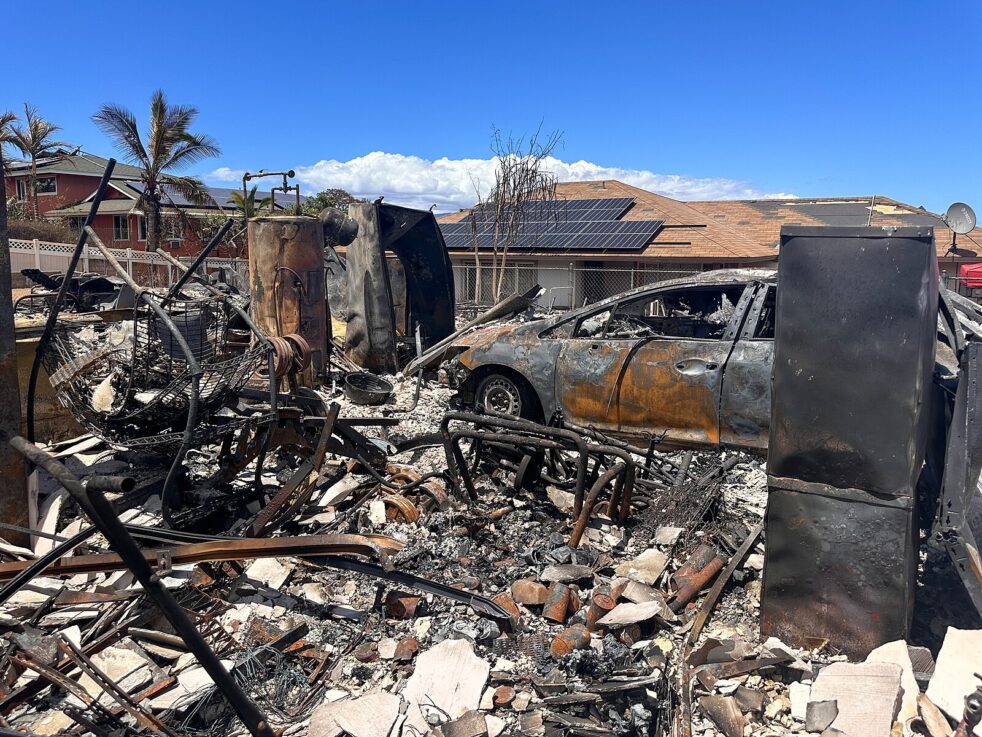The month of August was disastrous for Hawaii, specifically for the island of Maui. Maui is Hawaii’s second-largest island, housing many native Hawaiians and serving as a destination location for many tourists.
On Thursday, Aug. 8, a brush fire, or a fire catalyzed by dry plant matter, was detected in Maui’s Upcountry regions and resulted in at least 50 residents taking emergency shelter according to CNN.
By 6:40 a.m., the fire was starting to spread. Hurricane Dora’s high-velocity winds lifted and carried the smoke and sparks, and another brush fire started near Lahaina.
However, by 9 a.m., they contained the fire; firefighters completed a perimeter containment of the blaze and prevented it from spreading. Although the fire was still alive, it was minimized, and they expected that citizens could return to their daily activities.
At 3:45 p.m., a flare up caused panic and fear to spread, and evacuations near Lahainaluna Road, Hale Mahaolu and Lahaina Bypass occurred. Many roads were closed down due to power lines being out because of the hurricane. The roads were hard to see, and the sky was covered in thick, gray smoke.
Mere minutes later, acting Governor Sylvia Luke issued an emergency proclamation that called for the National Guard to help emergency responders in the area. The proclamation also allowed for the expenditure of emergency funds. Governor Josh Green had been fully briefed as well, and he stressed that safety was the number one priority. “Lieutenant Governor Luke has my full support,” said Green. “My thoughts are with the residents and businesses affected by Hurricane Dora,” he said.
Panicked residents started taking shelter in the Pacific Ocean as the fires spread. Roads were covered in heavy smoke, and the traffic was almost at a standstill, with many roads being shut due to the spreading fires.
Around 9:45 p.m. on the same day, the Coast Guard saved those who entered the ocean from hypothermia and drowning and brought them back safely to the shore.
One resident who was sitting on the rocks near the water for at least eight hours claimed that people all around him — including himself — were coughing up black smoke despite having been away from the fumes for hours.
By 2:45 a.m. on Aug. 9, the fires started moving towards Kahului. By 9 p.m., the fires were so bad that military helicopters were deployed to pour over 100,000 gallons of water over the region.
At that time, around 115 people were confirmed dead by the Maui Police.
All authorities and experts warned that the death toll would only rise in the upcoming weeks as more people are recovered from the rubble and damage.
Only nine of the victims have been identified due to extensive fire damage that ravaged the lives of all others. Recently, the toll for the number of unaccounted people has gone down as radio signals, and communication lines started working again and people were able to make contact and confirm safety with their loved ones.
Apart from the fires, one of the biggest concerns was housing arrangements for the displaced. Thousands of residents lost their homes and material possessions and have nowhere to go besides emergency centers, which are very high in demand.
President Joe Biden and his wife traveled to Hawaii to help aid those who were affected and promised to help for as long as it would take.
“May God bless all those we’ve lost, may God find those who we haven’t determined yet and may God bless you all,” said Biden.
All citizens of the United States are encouraged and urged to help out as much as they can. The Red Cross and other organizations have set up emergency centers near Lahaina and have so far donated tons of clothes, hygiene supplies, canned goods and water, as well as as much medical aid that could be offered to residents.
Khushi Afre, third year BA, is working to provide aid for the residents of Maui. She encourages other students to do anything they can to help all of those who are displaced.
“It would really help to donate to the Maui Strong Fund,” she said. “It’s better to send money instead of items because we don’t really know what people need right now. It’s all up in the air. It’s also a long-term problem and can’t be something we forget about after a month. Recovery might take years and every penny counts.”
